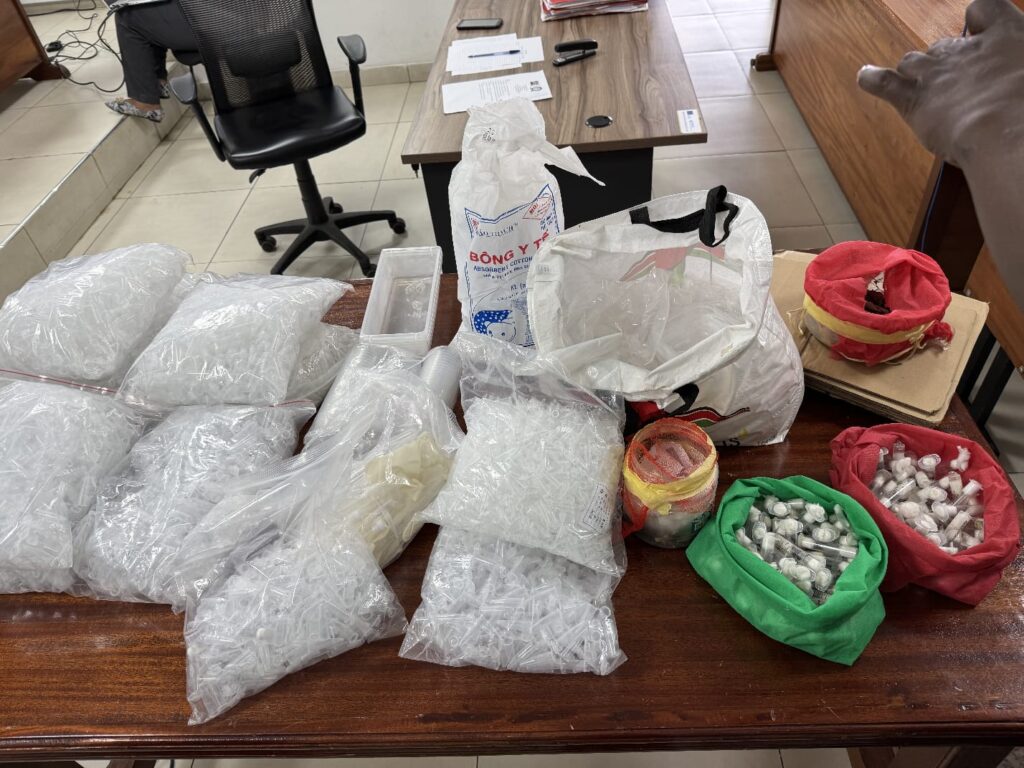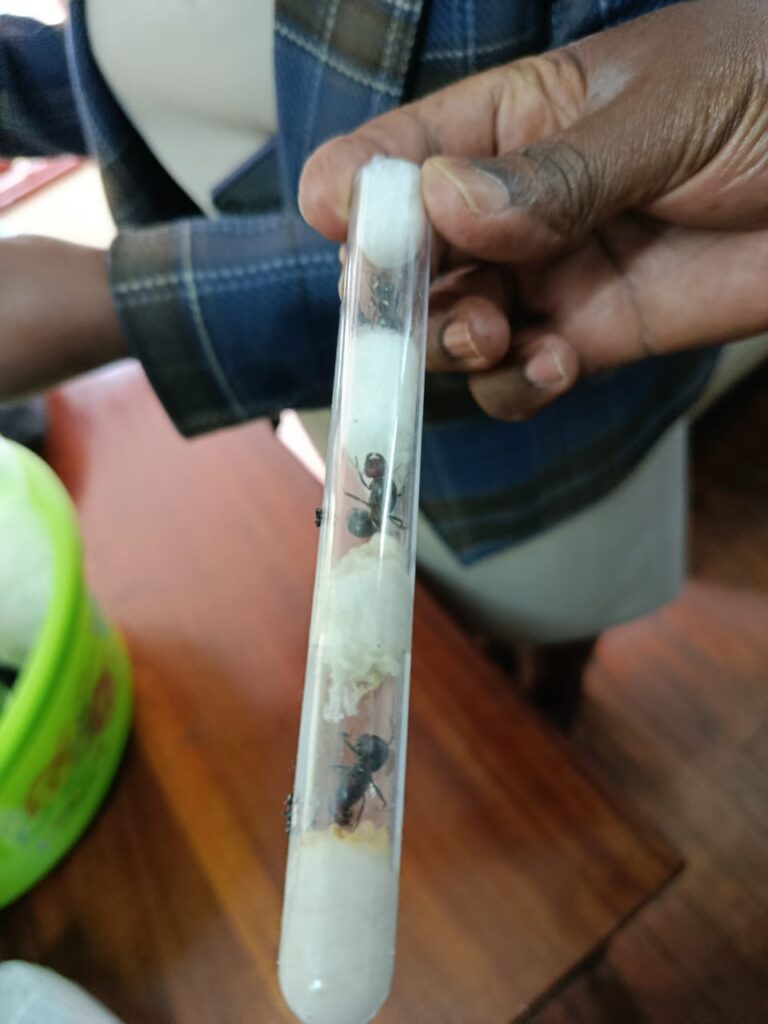By Winnie Ali | aliwinnie3@gmail.com
Kenya’s tough stance on wildlife crime is now on the spot, as a Nairobi court prosecutes a landmark case involving illegal trafficking of live garden ants.
While the tiny insects may appear insignificant compared to the country’s iconic “big five”, the crime now appears equally severe, and a critical test on Kenya’s comprehensive wildlife protection framework.
In a precedent-setting case that has drawn international attention, two Belgians, a Vietnamese, and a Kenyan pleaded guilty to illegal possession and trafficking of live garden ants, in contravention of Kenya’s Wildlife Conservation and Management Act, and the Nagoya Protocol.

The case at the JKIA Court was on April 15, 2025,pushed to next week, to allow the submission of critical pre-sentencing reports.
The suspects were arrested after authorities intercepted specially designed test tubes and syringes containing hundreds of live Messor cephalotes, a species of queen garden ants native to East Africa. These ants, known for their complex colony-building behaviour, are increasingly sought after by collectors in exotic pet markets in Europe and Asia. Investigators said the smuggling was meticulously planned, with the containers engineered to sustain the ants for up to two months and evade security screening.
“This case represents a grave instance of bio-piracy and wildlife crime,” said Senior Principal Magistrate Njeri Thuku.
“The ecological implications of removing such species from their natural habitats without due process cannot be overstated,” added the magistrate.
On April 14, all four suspects, including Duh Hung, a Vietnamese and Kenyan Dennis Ng’ang’a, pleaded guilty to trafficking and illegal possession of the creatures. Hung and Ng’ang’a were held at the Lang’ata Police Station, and the Belgians at Industrial Area Remand Prison.
The court pushed the proceedings to Wednesday, April 23, to enable preparation of a pre-sentencing report by the Probation Officer, an expert ecological opinion by the National Museums of Kenya, and a victim impact assessment by Kenya Wildlife Service. These reports will provide a scientific, legal, and sociolect-economic lens through which the impact of the crime will be assessed.
“This is not just about ants, it’s about our national sovereignty and ecological heritage,” said a KWS spokesperson. “Bio-piracy robs communities and institutions of the benefits they deserve. Kenya is a signatory to the Nagoya Protocol, which mandates fair and equitable sharing of benefits arising from genetic resources. The suspects violated the national law and Kenya’s international commitments.”
Under the Wildlife Conservation and Management Act (2013), trafficking wildlife, including invertebrates like ants, without proper authorisation, is a serious offense. Section 92 of the Act prescribes stiff penalties for such acts against endangered or protected species, whether flora or fauna. The penalties include imprisonment and heavy fines. Experts now say the trafficking of ants signals a shift in trends towards lesser-known but ecologically critical species.
The confiscated Messor cephalotes ants are of interest due to their role in soil aeration and seed dispersion. “Their removal disrupts local ecosystems and undermines biodiversity conservation efforts,” said an NMK representative. “This case also sets a dangerous precedent for other insect species that may now be targeted.”

KWS has appealed for vigilance at Kenya’s borders and transit hubs, specifically seeking advanced detection technologies, targeted public awareness campaigns, stronger community engagement, and international cooperation to stem the rising tide of bio-piracy.
“This landmark case sends a clear message: Kenya will not tolerate exploitation of its genetic resources,” said the KWS representative. “Wildlife crime of any kind, whether involving elephants or ants, will be met with full force of the law,” he added.
For now, as the case resumes tomorrow April 23rd, the world waits to see how Kenya handles it, navigating the fine balance between biodiversity protection, global demands and environmental justice.









